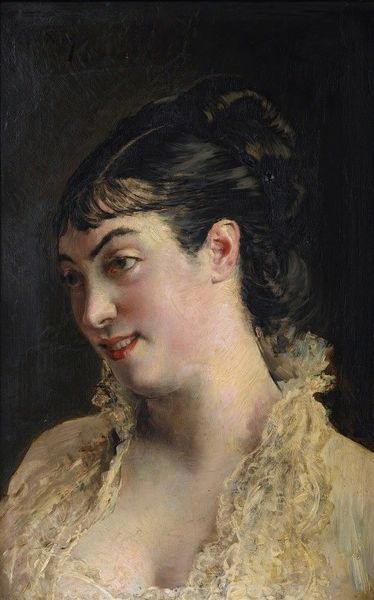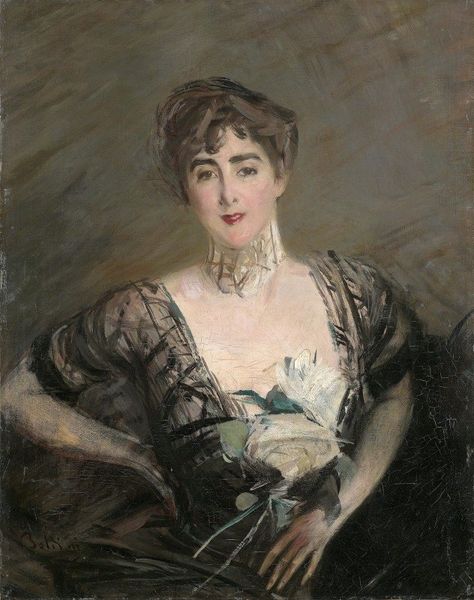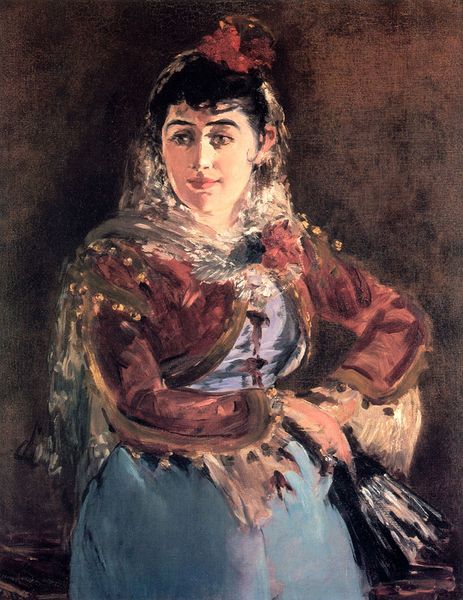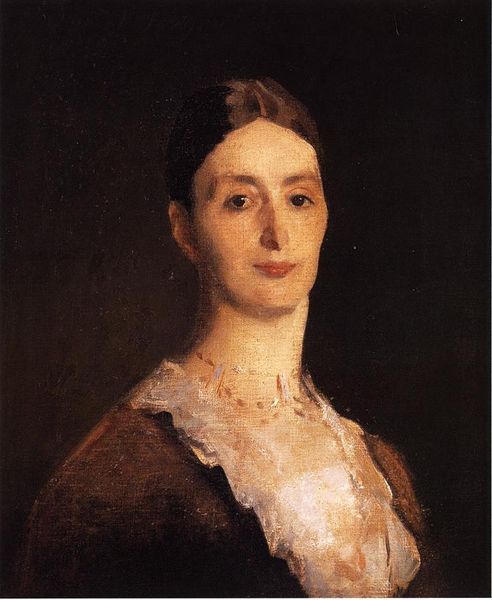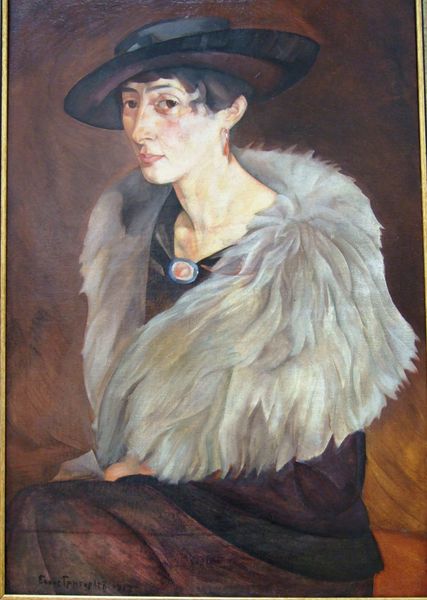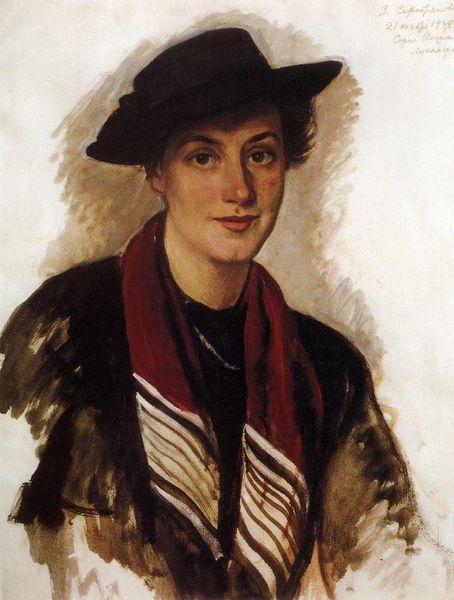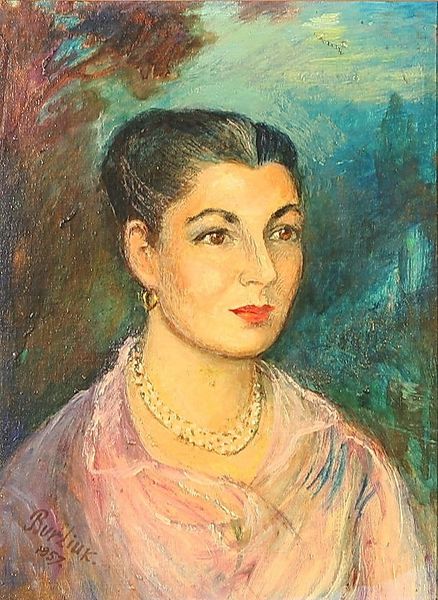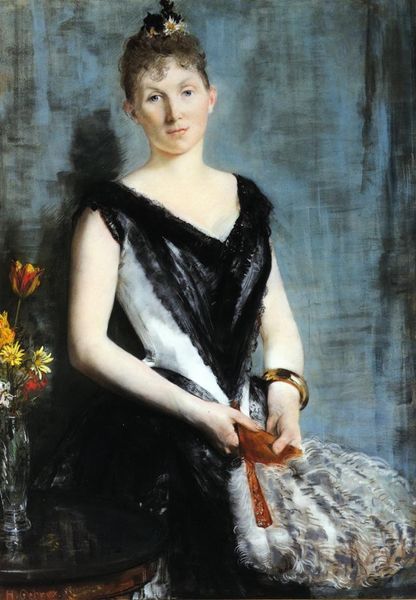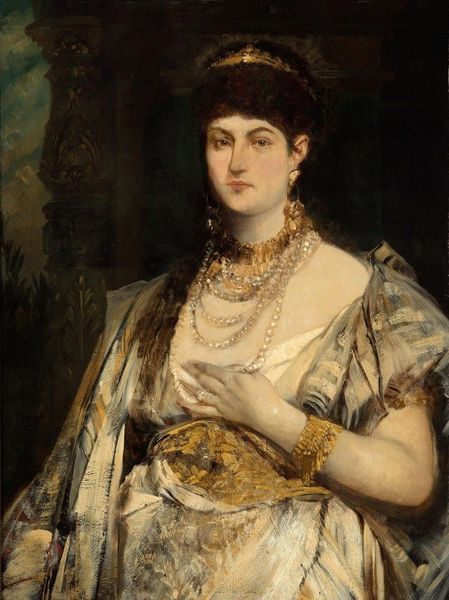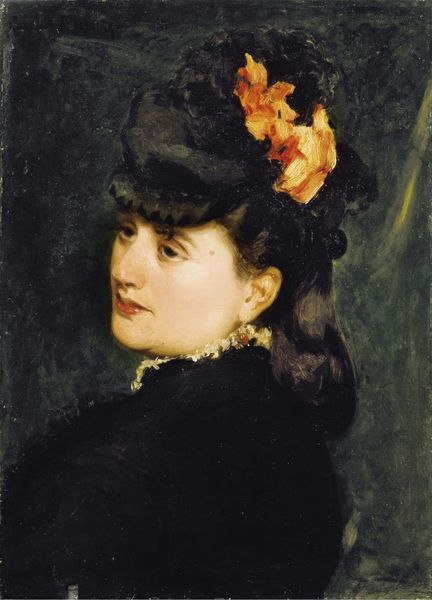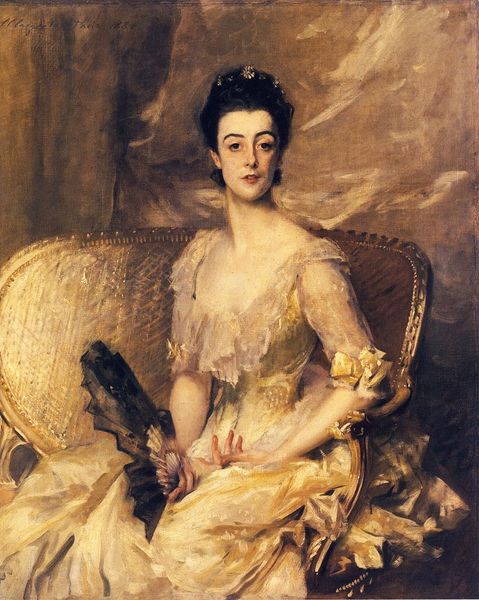
painting, oil-paint
#
portrait
#
painting
#
impressionism
#
oil-paint
#
oil painting
Dimensions: 55 x 45 cm
Copyright: Public domain
Editor: This is Édouard Manet's "Lady in a Fur," painted in 1880. The oil paint handling gives a real sense of immediacy, and the fur looks incredibly tactile. What’s your read on this portrait? Curator: It’s a study of contrasts, isn’t it? Think about the materiality itself. We have the smooth canvas, worked with the impasto of oil paint to conjure the softness of skin and the luxurious texture of fur. The very act of depicting wealth through such deliberate craftsmanship speaks volumes about the social values embedded in its production. Editor: I see what you mean about the contrast – the raw materials of paint used to portray expensive fur. Is Manet making a statement about consumerism, even back then? Curator: Precisely! He's pointing to the processes by which commodities gain value. Fur, here, signifies status, but Manet makes us acutely aware of its constructed nature. The brushstrokes don't just represent fur; they represent the labor and resources required to produce that image of luxury. Consider how he teases the viewer, implying but not fully rendering. Where does our gaze linger and why? Editor: I hadn't thought about it that way before. I was so caught up in the Impressionistic style I nearly missed how the fur functions as more than just a prop! So you are saying that, the way he emphasizes the “making of” through visible brushstrokes challenges the idea of effortless beauty and reveals a complicated layer underneath? Curator: Exactly! Manet uses materiality to dissect the social codes embedded within wealth and representation, showing us the human effort—and perhaps even exploitation—beneath the surface. Editor: This reframes the painting for me completely, thank you for opening my eyes.
Comments
No comments
Be the first to comment and join the conversation on the ultimate creative platform.
